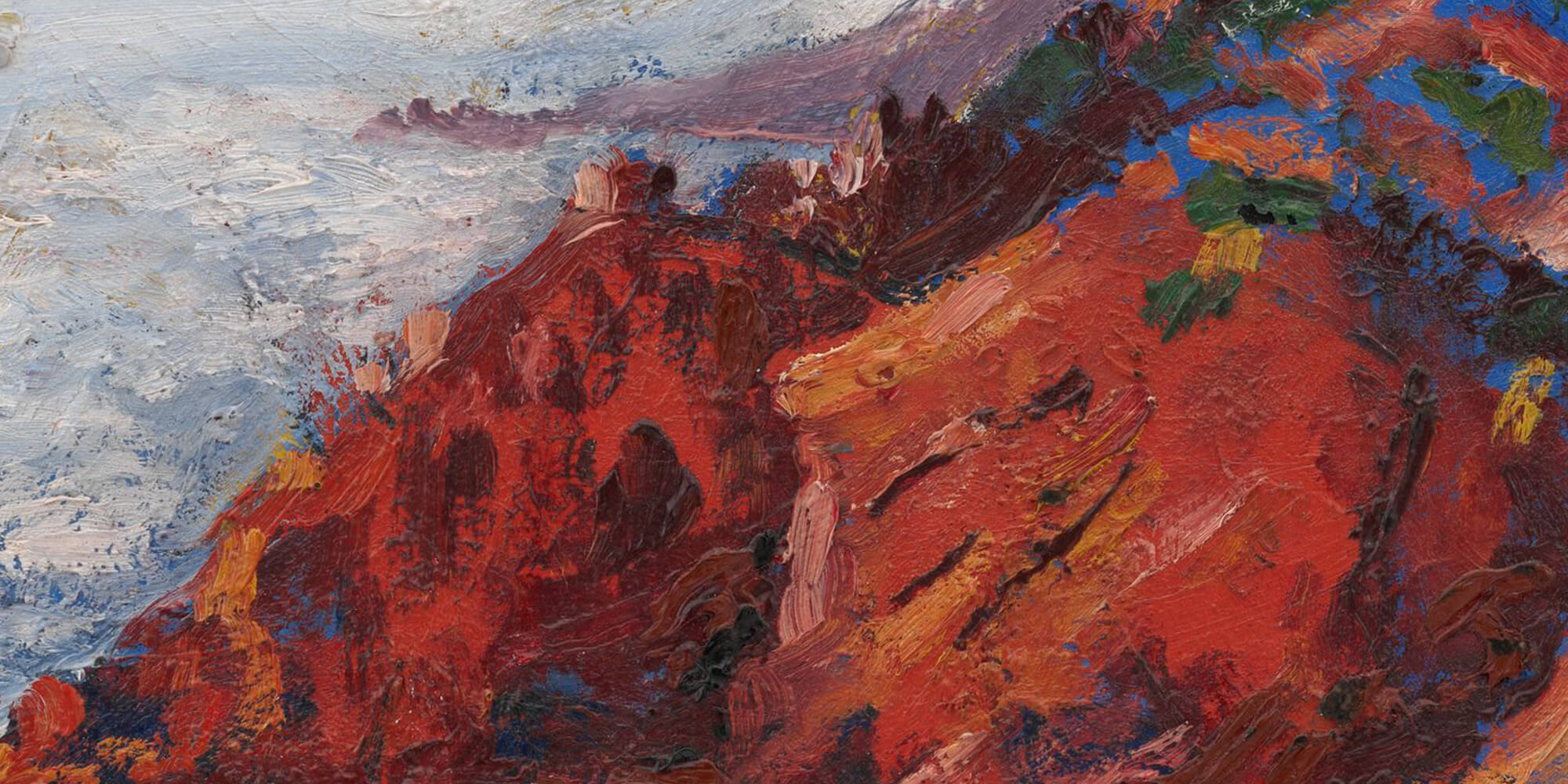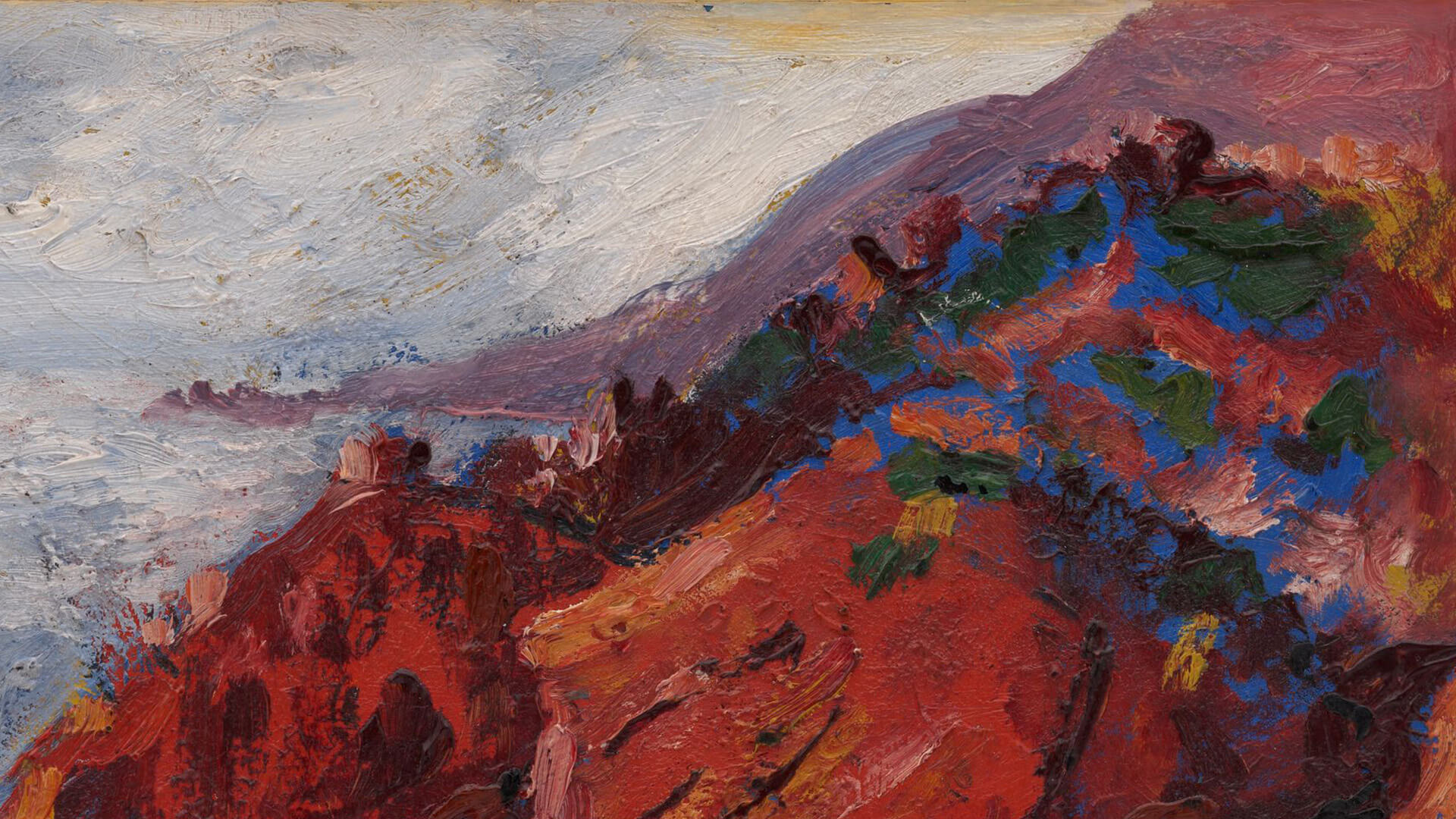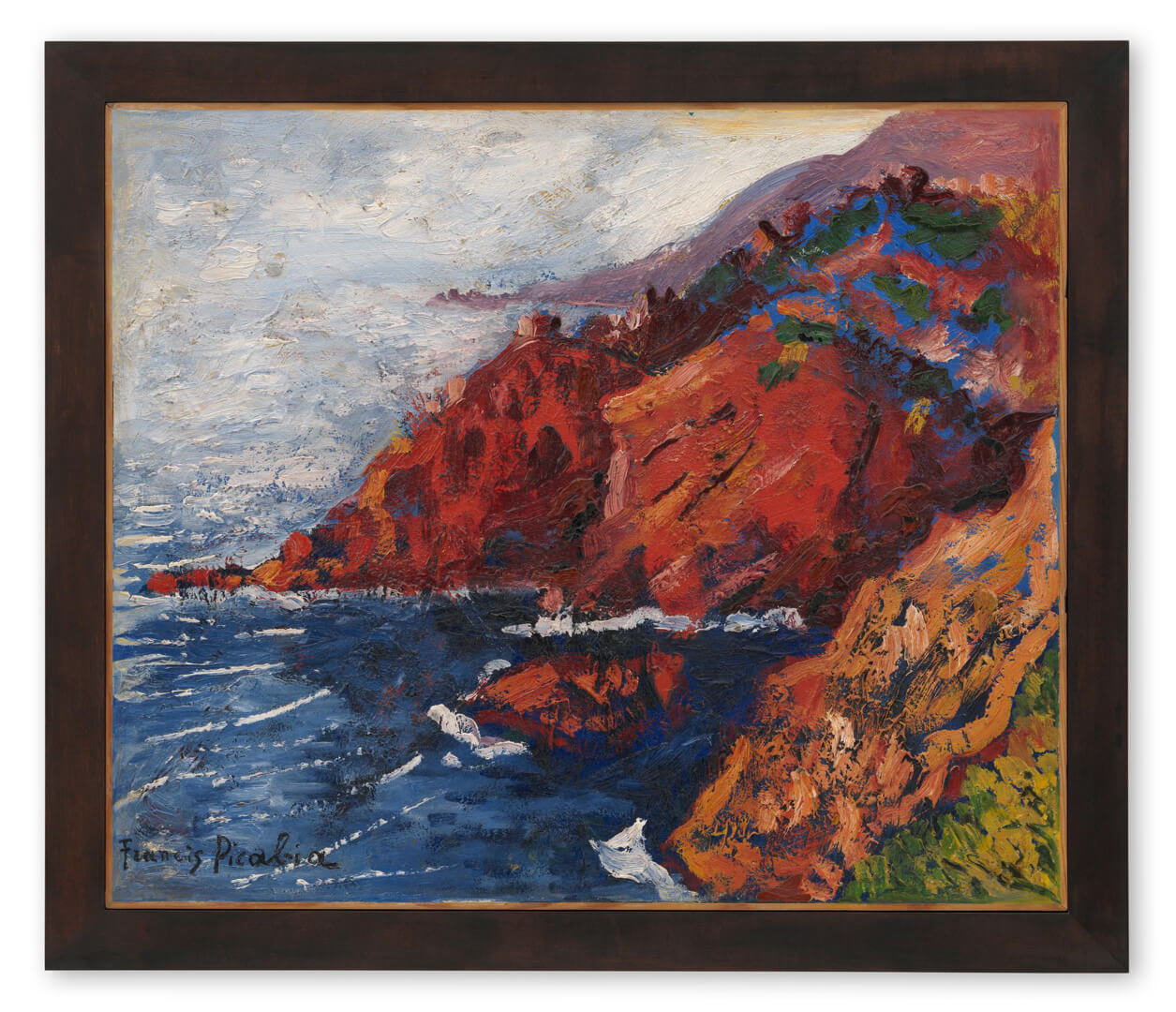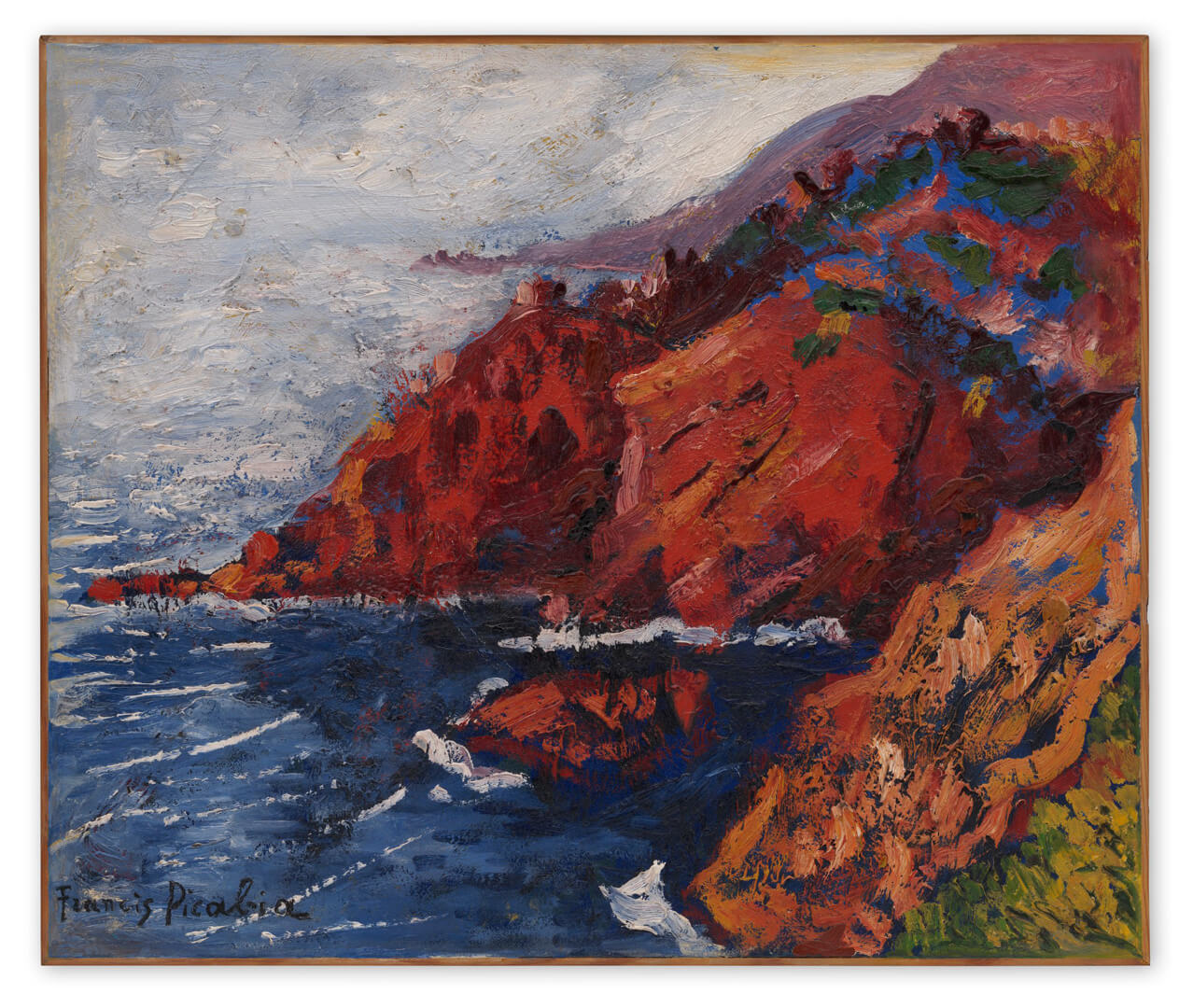
Francis Picabia
Paysage
Paysage
c. 1940 Oil on reinforced cardboard, mounted on wood 54 x 64.5 cm / 21 1/4 x 25 3/8 in

Francis Picabia’s career was defined by his restless, visionary approach. His richly diverse and confounding oeuvre is marked by fluid movement between figurative representation and abstraction, and experimentations with a variety of styles, including Impressionism, Cubism, and Surrealism. During the 1940s alone, Picabia created a series of realist figurative paintings of nude women, a number of works in which the artist layered abstract and figurative elements akin to his earlier ‘Transparencies’, as well as bold abstract paintings.

Made during this incredibly innovative period, ‘Paysage’ (c. 1940) represents a remarkable return to his earliest works and motifs from the beginning of the century. Celebrated for his radical appropriation of different techniques and his plurality of styles, Picabia’s originality is fundamentally rooted within his landscape paintings. The artist established his early reputation with a number of landscapes reminiscent of Camille Pissarro and Alfred Sisley, based on photographs and postcards of the South of France. Shortly thereafter in 1909, Picabia and his first wife Gabrielle Buffet travelled to the area for their honeymoon.
Inspired by the light and colors, he continued to depict the Mediterranean coast, trialling a number of different styles including Fauvism and Pointillism. More radical depictions of the area, including a collage consisting of paint, feathers, and pasta, followed after the artist moved to Mougins, near Cannes, in 1925. By the time Picabia made ‘Paysage’ during the Second World War, he was mostly working from his studio at Golfe-Juan on the Côte d’Azur, once again producing paintings inspired by postcards, as well as magazines and advertisements. Recalling some of the artist’s very first landscapes, ‘Paysage’ belongs to an extraordinary group of works which embody Picabia’s deeply influential practice.

